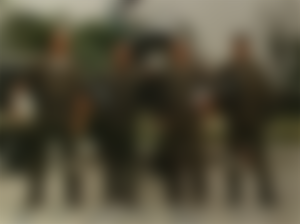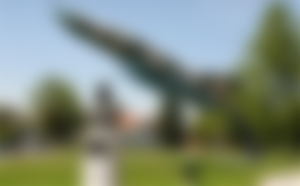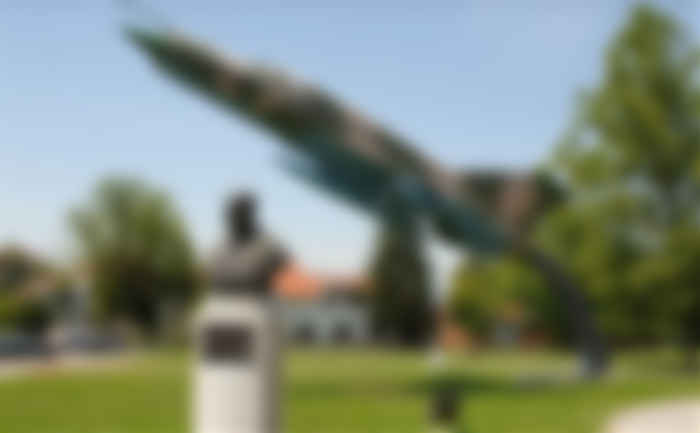To live and die for the homeland is the most sublime act because it manifests the nobility and generosity of a man who has become eternal. What Rudi did, only a few could do.

During the brutal Greater Serbia aggression on Vukovar, Eastern Slavonia and Croatia in 1991, despite the enormous risk, Rudolf Perišin organized the departure of his family to Croatia and the abduction of MIG-21 from the then Yugoslav People's Army with which he landed in Austria. His words ‘I am Croats, I cannot and I will not shoot at Croats’ were spread all over the world and built into the consciousness of the Croatian people as a symbol of resistance. With this patriotic act, he dealt a heavy blow to the then Greater Serbia policy, and gave the Croatian people and soldiers a great incentive to defend and liberate their homeland. But Rudi did not stop at that act, but built himself into the foundations of the Croatian Air Force and the Croatian Army.

Then the whole world, with a photo of the Croatian pilot and MiG-21 plane at the airport in Klagenfurt, transmitted his words:
"I am a Croat, I cannot and will not shoot at Croats," Perisin said, taking pictures next to his plane.
After the flight, the enemy was completely confused.
For the Austrian media, Pereshin's flight was just a bizarre episode of the war in the neighborhood, which they launched as an exclusive. In Croatia, exposed to Serbian aggression, the captain of the first class, Rudolf Perešin, became a real national hero.
Serbian war propaganda, on the other hand, was completely confused. How to explain that a Croatian pilot, in front of their noses, from the largest military airport Bihać, almost "stolen" a supersonic fighter plane and landed peacefully in Austria. So they invented that Peresin asked for political asylum in Austria. And it's not. He clearly told the first Austrian soldier who approached his MiG and confusedly asked him what he was doing there.
- I deserted from the JNA because I am not able or willing to shoot at Croatian soldiers.
Late in the evening of October 25, the colonel of the Austrian Air Force, fighter pilot Dieter Szolar, met with Perešin in an inn in Felekirchen, where the army, after a short interrogation at the airport, sheltered the Croatian pilot.
Escape was a complicated and dangerous endeavor:
Szolar, obviously a cautious guy, immediately transferred Rudi to a private apartment. He realized that some Serb asylum seekers were "hanging out" in the inn.
- Rudolf Perešin handed over his military uniform and personal weapons. He was given a civilian suit that did not suit him, so I brought him underwear, personal hygiene items and fruit - Colonel Szolar told the details in the documentary "Flight to Remember".

The escape of the Croatian pilot from the Željava airport near Bihać was a complicated and dangerous venture that had been being prepared in complete secrecy for months. Without Perešin's wife, Ljerka, this would certainly not have been possible. She was the first to get in touch with the Croatian side and told her husband that there was an interest from the Croatian authorities for Rudi to fly home.
Escape code: 'Rudi come to the wedding in Austria':
Finally, a confirmation came from Zagreb. The code for the flight and escape was: “Rudi, come to the wedding in Austria. Take the camera and the camera. ” After a four-day stay in Austria, Perešin was released and secretly transferred to Zagreb. Now the Perešin family was finally together. In his country, among his people. Rudolf continued to fly in the Croatian Air Force and soon became the commander of the elite 1st Fighter Squadron of the Croatian Air Force.

His escape with the MiG (which was kept by the Austrians) announced the arrival of other Croatian pilots.
In mid-May 1992, godparents Ivica Ivandić and Ivan Selak flew from the Užice military airport to Split and Zagreb.
Before them in February 1992, in particularly dramatic flight circumstances, so did Danijel Borović, who landed in Pula.
Died in Operation Flash:

ptured.
Rudolf Rudi Perešin was killed during Operation Flash. His MiG 21, during a risky combat mission, was hit by Bosnian Serb air defenses. Perešin managed to catapult himself from the damaged plane that crashed on the Croatian side. For several years, Serbs played cruel games about his fate. They did not want to reveal whether Rudi Perešin was killed immediately or captured. Finally, the remains of Brigadier Perešin were returned to Croatia in the summer of 1997.

The remains of the legendary pilot were returned to his family members on August 4, 1997, and after a little over a month, on September 15, 1997, he was buried in the Mirogoj cemetery in Zagreb.
Since March 25, 1998, the Aviation Technical School in Velika Gorica has been named after him, as well as the Training Center of the Croatian Air Force and Air Defense "Rudolf Perešin" in the Zemunik barracks near Zadar.

His plane, which flew to Klagenfurt in 1991, was returned to Croatia in May this year. Until now, it has been exhibited in the Military Aviation Museum in the Austrian town of Zeltweg, and today it is exhibited in front of the building of the Ministry of Defense in Zagreb.







👏👏👏👏